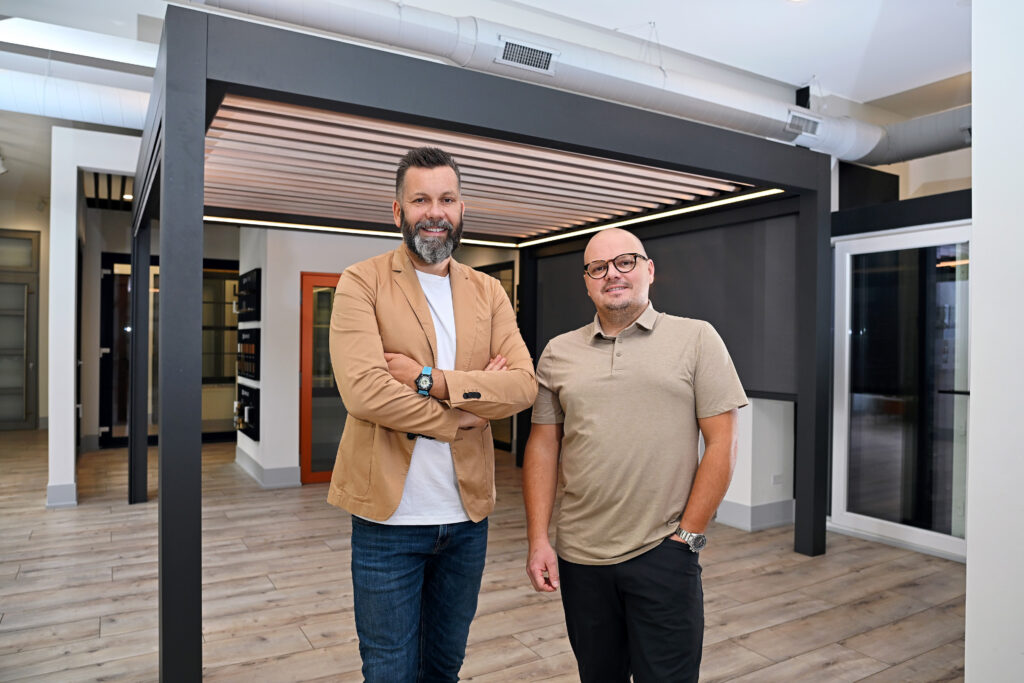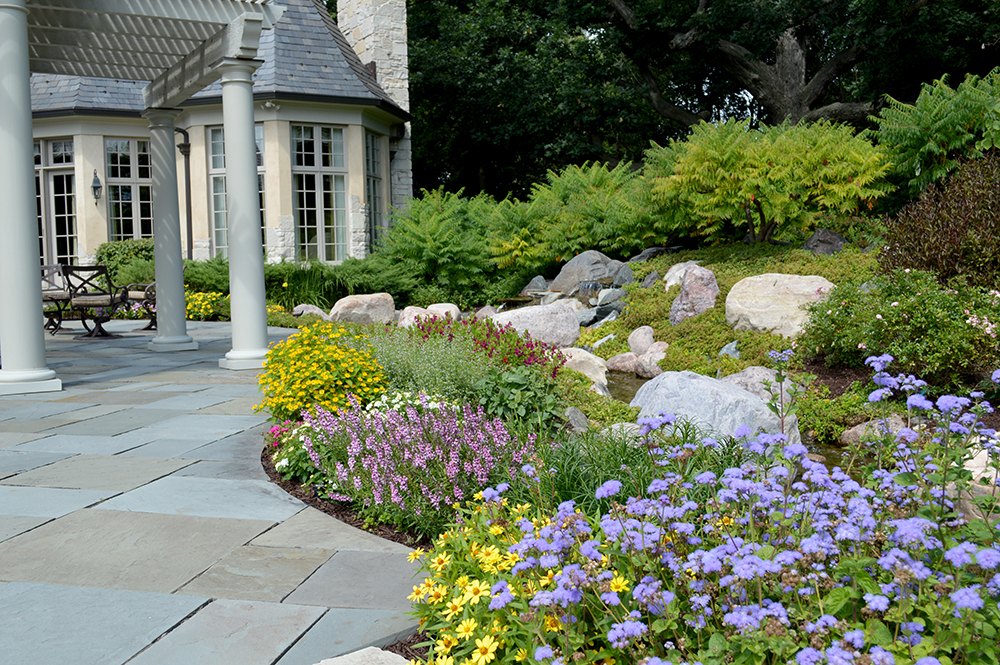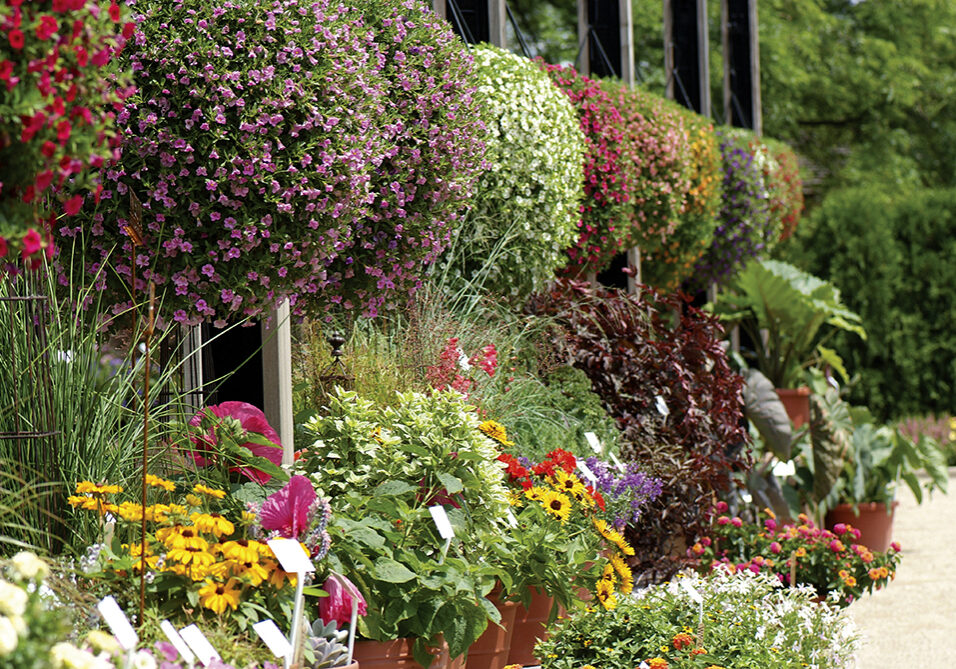
Ball Horticultural Company has grown to be the industry’s innovator
By Anna Hughes
Ball Horticultural Company is to be a major force in horticulture right here in the western suburbs. Driven by its commitment to pioneering plant science and supporting the needs of growers and retailers worldwide, it has grown from a small flower business to an international operation known for invention and innovation.
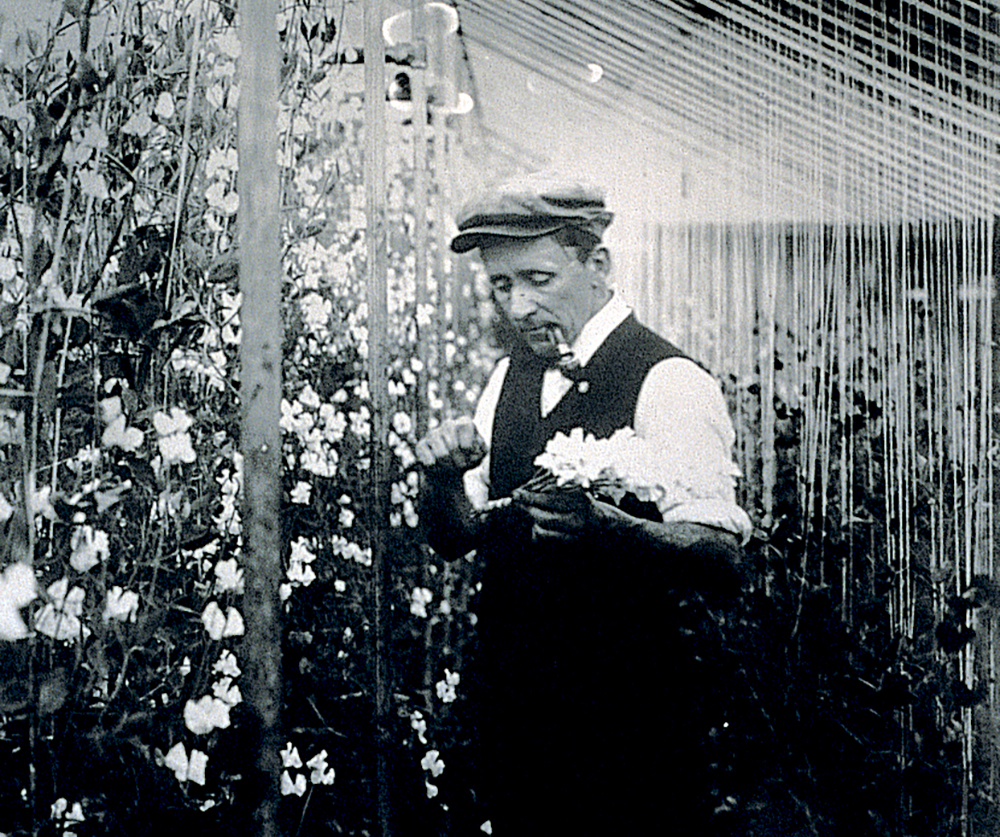
One of the first innovations by George J. Ball were Sweet Pea flowers.
Ball’s Background
In 1905, George J. Ball launched Ball Horticultural Company as a wholesale cut flower operation that would come to shape the industry as it is today. Some of the first flowers George J. innovated were Sweet Pea, Asters, Calendula, Chrysanthemums, Narcissus, and Carnations. The company’s original location was a 5-acre site in Glen Ellyn, Illinois. In 1928, it relocated to West Chicago, Illinois, to better utilize nearby railroad and airfield access, facilitating the distribution of fresh flowers and seeds to downtown Chicago and beyond.
The company has grown to “color the world” and transform garden dreams into reality. Ball is now in its fourth generation of family ownership and is a leader in all facets of horticulture. It’s also the parent of several plant-breeding companies, as well as Ball Seed®, a major distributor that supplies commercial greenhouses with plant inputs (seed, plugs, cuttings, young plants, etc.) Ball enhances the plant supply chain with innovative plant genetics and supports commercial greenhouse growers in expanding their businesses and delivering plants to market each gardening season.
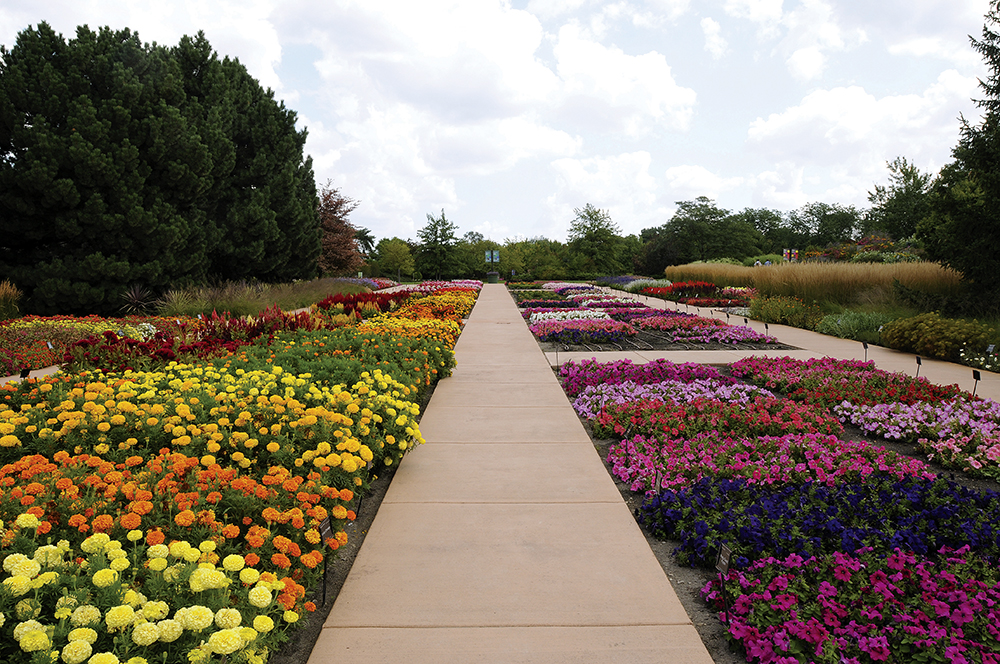
“The Gardens at Ball” located at company headquarters have been the evaluation and testing grounds for horticultural introductions and improvements for over 80 years.
Breaking Down Ball
So much happens before consumers buy plants, and that pre-purchase process is where Ball Horticultural Company comes in. It starts with creativity. Plant breeders set breeding goals based on a few questions: Does this new plant have a place in the market? Can we produce and supply it reliably for our customers? Is it visually appealing – and trendy! – for the retail market? Will it perform well and make a gardener feel successful and happy?
This process can take anywhere from three to 10 years. Once all of those goals are met, a plant is introduced first to the horticulture industry at a launch event known as Spring Trials, which takes place throughout California-based research greenhouses. Then, commercial greenhouses make their choice of what they will plant and grow in their regions.
George’s Growth Goals
George J. Ball was a true innovator and entrepreneur in constant pursuit of better, more effective ways to breed and supply plants. George and his successors traveled extensively, forging valuable connections and lasting relationships with other companies along the way. Following WWII, decades of significant growth and periods of consolidation provided increased opportunities to serve a broader market.
Although their home base has remained the same, Ball Horticultural Company’s international impact has grown significantly. The company has a global reach with a strong presence in 20+ countries on six continents for plant breeding, research, product supply farms, and industry distribution. Their products are in the U.S. and Canada, as well as The Netherlands, China, Australia, Japan, Korea, the United Kingdom, India, South Africa, and Brazil. In addition, they have production farms in Thailand, Nicaragua, Colombia, Chile, and many other places where environmental conditions are perfect for growing year-round.
Testing & Technology
Ball Horticultural Company is proud to have award-winning plants. In order to win national and regional awards, plants are run through extensive trials in many environments and conditions. Ball said that their breeding companies implement particular standards to ensure the plants perform at their best for the home gardener.
Improved technology provides Ball scientists and innovators an array of opportunities for new plants and faster production.
They employ a range of technological tools for plant biology, pathology, and production to bring new and improved plants to the market. As a leader in seed technology, they specialize in processes like pelleting, coating, and counting seeds to enhance greenhouse efficiency. They have even combined multiple varieties into a single seed pellet, such as the SimplySalad™ pellets, which include various types of lettuce in one pellet to create a convenient multi-salad blend.
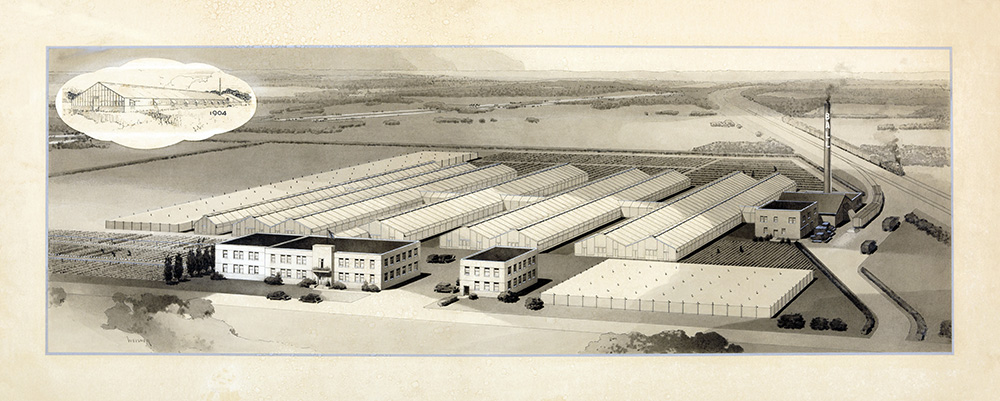
Ball Horticultural Company has been located in West Chicago since 1928.
Consumer Corner
Ball’s primary customers are commercial greenhouse growers, ranging from small-scale flower farmers to large mechanized operations that produce in mass. In terms of service, they work closely with breeding companies and international suppliers to bring plants to market. Ball also partners with major retailers like The Home Depot, Meijer, and Walmart to help build their garden center offerings each spring.
They also supply mail-order catalogs, repackaging seeds into smaller quantities for gardeners who prefer to start their flowers from seed. Retail locations or gardens that feature Ball plants in the area are Platt Hill Nursery in Bloomingdale, Morton Arboretum in Lisle, Goebbert’s Farm in South Barrington, and Schaefer Greenhouses in Montgomery. Be sure to share some fun facts about the plants you’re seeing with your family on your next visit!
Hinsdale Magazine Group thanks Katie Rotella of Ball Horticultural Company for the expertise she provided for this article.
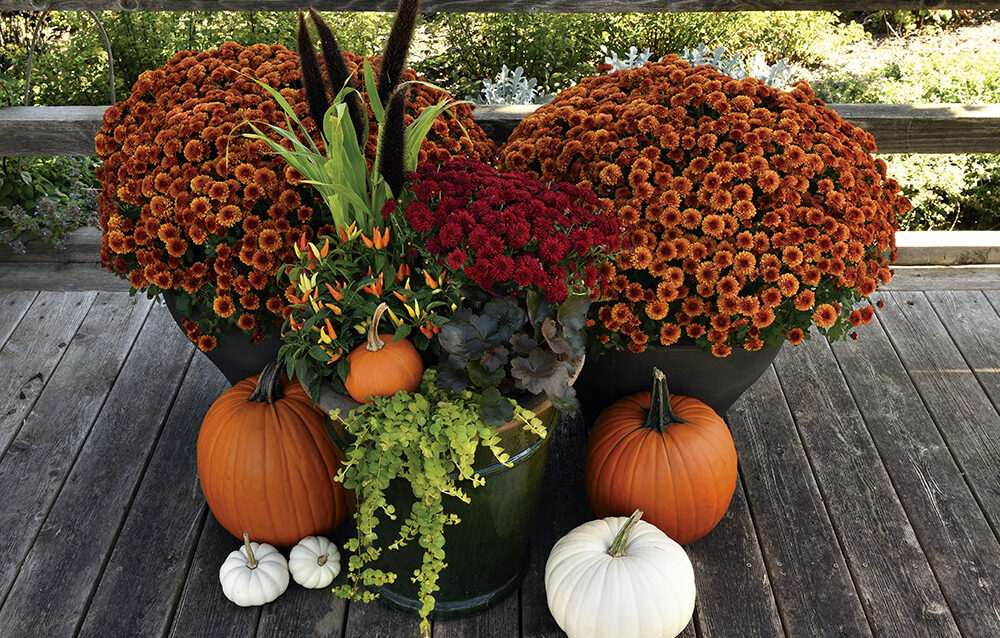
Fall Foliage
If you’re looking to refresh your fall planters and branch out into something new, Landon Gibbs, a Horticulturalist and Garden Designer for Ball Horticultural Company, has some ideas. While classics like Mums, Kale, and Pansies never go out of style, here are some of his suggestions:
1 Carex ColorGrass Red Rooster, an ornamental sedge (similar in appearance to a true grass) that is a rich shade of chocolate, pairs beautifully with silvers, whites, and deep maroon.
2 Eucalyptus, which is hugely popular in the floral industry, has been growing in popularity for in-ground and container use. It offers height and longevity in fall displays, turning hues of beige and tan in winter while maintaining its form.
3 Ornamental Pepper Onyx Orange: There are countless varieties of ornamental peppers, but Onyx Orange provides jet-black foliage with stunning fruit that fades from purple to orange, perfect for a Halloween theme!
4 Perennials are a perfect option for fall displays. Also, right before winter, many can be planted in the garden to enjoy the next season. Things such as the Echinacea Sombrero series, Heuchera Carnival series, Centaurea Silver Swirl, and the Salvia Mirage series are stunning options for containers and landscapes.











